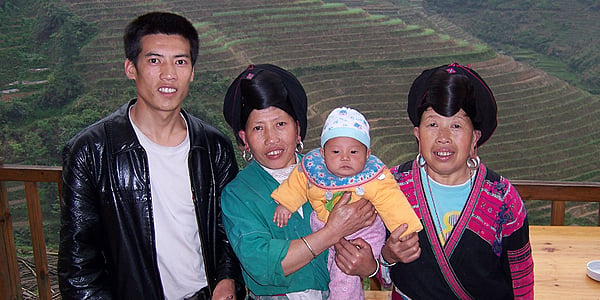


Ethnic minorities can be found in each of the three south western provinces. Hui, Naxi, Manchu, Miao, and Yao share the rice fields and mountains, reveal their colorful traditional dress, and seem torn between their traditional ways of life and the modernity that has recently reached their corner of the world.
One of the largest groups is the Zhuang people, with a population of 18 million. They live in Guangxi, on the border with Vietnam, and speak a language that is related to Tai, a non-Chinese language that is quite widespread in China. The Zhuang are well known for their love of music, but other ethnicities also share this passion.
Meanwhile, the Dong population includes three million people living in Guangxi, Guizhou and Yunnan. The Dongs' way of life is very representative of the customs of the region : they live off agriculture, particularly the farming of rice, which they harvest several times per year. They are animists: they worship spirits, animals, and large trees. Highly skilled architects, they are capable of building covered bridges as well as towers. They communicate in a way that lends itself to singing. As such, you may be taken aback to discover how warm and joyful their language is. Dance is also at the heart of Dong culture. You can regularly see shows where beauty and elegance go hand in hand with festive indigo blue and black costumes.

When faced with urban development and modernity, ethnic minorities protect their culture while adapting to the effects of urbanization and technological progress. As such, you'll discover people with profound, diverse customs. The richness of their folk culture and craftsmanship is a powerful incentive to travel, and a great ethnological discovery. Their traditions have become sources of income through the impact of tourism, which means that they can remain rooted in the past while coexisting with technological developments and the influx of visitors.
Proving that these traditions are not just tourist attractions (or at least, not yet), when you walk past the rice fields, you sometimes see bodies of water filled with fish traps. These round, plant-based traps have been used in the same way for centuries by minority ethnic groups. Life is fleeting but tradition endures.